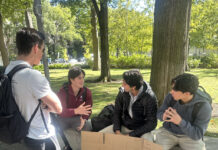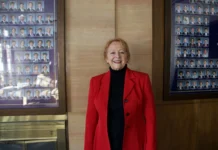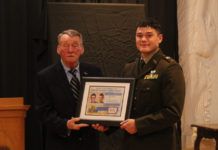Guest Column | Unveiling the realities of American frat culture
My entire conception of fraternity life was, for the most part, built on movies like “Neighbours” and “American Pie Presents: Beta House,” where it is painted as a hub of eccentric and unrestricted merriment around the clock. My own experiences as an exchange student revealed a more complex and nuanced social landscape, challenging these simplistic portrayals and highlighting the often-overlooked depth and diversity within these communities.
My introduction to fraternity life was by word of mouth and through Sidechat. A few minutes into it, I realized that the openness and accessibility glorified in movies were light years away from reality. From dark, cramped porches to parties that were dimly lit and overflowing, my first forays conformed to media-driven stereotypes and showed me a fraternity culture that was more difficult than rewarding to navigate.
My initial encounters with fraternity life were guided by Sidechat, where parties are often advertised. The fraternity parties themselves were an accurate contradiction of the welcoming experience, which I somewhat expected. Early experiences, such as being selected for the party based on superficial judgments, highlighted one uncomfortable truth about the practice of exclusion within social spaces. The selective entrance would only allow people known by the bouncers and those considered attractive. The eeriness that my friends and I felt pointed to an overall feeling of not being welcome. This specifically creeped out my female companions, who were also experiencing this for the first time.
One experience in the cramped basement further increased that impression when the crowded and stifling conditions forced us towards the more welcoming environment of Smokey Joe’s, and that’s where we ended up after many of our excursions. Such experiences of exclusion and discomfort were recurring, dampening our enthusiasm and an effective attempt to integrate into Penn’s social life.
The turning moment in my walk through fraternity life was at a Halloween party, which was distinctly different because I had received a personal invite from a friend with ties to the fraternity. It was a much warmer welcome — I felt like a part of the social fabric of the University, as opposed to the experiences that happened before, where we had just turned up because of finding something on Sidechat.
This event sparked more positive interactions. As I began to be better known in these circles, the fraternal doors did seem to open, and it appeared that the exclusivity which I first had felt began to diminish for me while still being present for others. The fraternities I interacted with revealed themselves as diverse groups of individuals, each bringing different perspectives and openness to their gatherings.
Besides the deeper relationships, my participation developed until I was invited to the parties from just attending the parties. This gave me an insider’s perspective of real community and belonging, which could be found in some fraternities. It was more than I had been experiencing up to that time because of the superficial barriers. Such experiences underscored the dual character of fraternity life — an environment that was both exclusionary and friendly — but made the individuals present realize that social connections in college were indispensable.
As I delved deeper into fraternity life, discussions with members indicated that motivation and early experiences played an important role in their experience. They sought the sense of belonging and brotherhood, otherwise lacking in full measure, through fraternity life. The nature of the process of joining the fraternity varied physically and mentally, all designed to promote the team and make bonds between brothers stronger.
These insights helped me discern the different values upheld by various fraternities.
Some favored social status and exclusiveness, while others placed more weight on community involvement and personal development. This realization showed me that I should be in a group of people who share my values. This nuanced view greatly influenced my experiences within the fraternal community to be able to pick and choose from the type of groups, thus allowing me to get the most from my social experiences and appreciation of the constructive part of fraternity life.
During my time at Penn, I discovered a diverse fraternity scene that defied the stereotypes often seen in the media. This community of brotherhood, ranging from emotional support to professional networking, challenged my perceptions. I found deep, respectful connections that went against the usual assumptions, showcasing a complex fraternity experience based on inclusivity and respect.
Reflecting on these experiences, I see fraternity culture as inherently dualistic. While some fraternities reinforce negative stereotypes, others strive to create positive and inclusive environments. The complexity of fraternity life serves as a reminder of the diversity within social organizations and the importance of a nuanced perspective to properly understand and appreciate their impact.




















